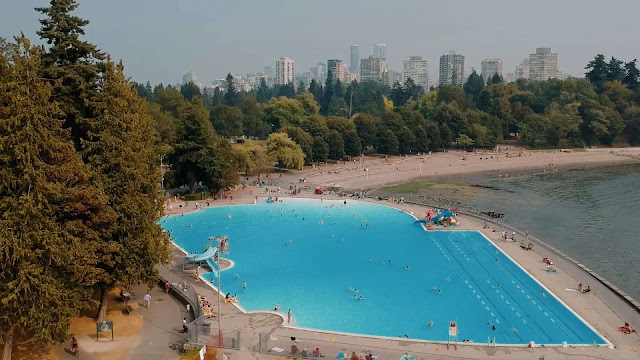Recently I had the experience of being admitted to the emergency ward of the venerable St. Paul's hospital for a gallbladder attack. Having never had any surgery in my life it would prove to be an eye opener on how our health system functions. Sadly, it would confirm what many have already been saying about our most sacred of Canadian institutions. It's broken.
The ambulance got to our apartment quickly and, after a mercifully quick diagnosis, I was provided with some morphine and a warm bed in a busy triage area. All around me were people in various stages of pain, disorientation, and distress. However, so far so good, now that I was settling down and my pain was under control.
Later that night I was moved into a bed in the surgical ward and hooked up to an IV that provided my body with all sorts of essential fluids. With surgery possible at any time, no food or liquids were permitted. Things now settled into a waiting game broken up by CT scans, MRIs, blood work, and other diagnostic tests.
St. Paul's has 14 operating rooms but only one is set aside for emergency surgery. The others are booked months in advance for everything from heart transplants and other lung/cardiac surgery to hip and knee replacement, and cancer treatment. The emergency operating room also has to handle any issues with women in labour. Anyone needing emergency surgery has to wait in a line that's constantly being revised based on how acute the need. A person like me who is comfortably sedated in a surgical ward quickly slips to the back of the line when traffic accidents or other life threatening emergencies upset the order in the queue.

The bad news was it would take another four days before I finally got my turn and the doctors could remove my gallbladder (a procedure called a cholecystectomy). The good news is that advances in medical techniques meant that, instead of being opened up with a huge incision like my father had to undergo, they were able to use a surgical procedure called laparoscopy that allows the surgeon to make small incisions in the abdomen with the aid of a camera (a laparoscope).
Everyone from the cleaning staff to the technicians, nurses, and doctors were wonderful. Friendly, upbeat, and professional there was nothing to complain about. The only problem is there weren't enough of them. Without people the whole system grinds to a halt, and a lack of staff is the main reason there is such a backlog of surgeries and why the operating rooms have only one shift. This is not just a problem at St. Paul's, it's the same problem at all the hospitals. But why is so hard to get medical staff in this country?

Part of the problem might be that the UBC Medical School admitted less than 300 students out of the 2,500 that applied. Or McGill that only admitted 215 out of 3,600 that applied. This year Queens decided to have a lottery for their 139 spots and 5,000 qualified students are expected to put their name in the hat. Clearly the demand for more doctors should indicate the medical schools in this country need to increase enrollment, but no. Finally, after 55 years, the first new medical school in Western Canada will be opening at the SFU campus in Surrey.
Not only are we not turning out enough medical students in this country, we are robbing other countries of their medical students. 16% of our surgeons, 25% of our specialists and 31% of our family doctors are coming from outside Canada. The situation isn't much different for nurses or medical technicians.

It's been 40 years since the Canada Health Act went into effect and provided universal care to any resident of Canada. Unfortunately for the Federal government, under the terms of the Constitution, health care is a Provincial responsibility. The only control the Federal government has over health care is by creating the terms by which it will pay for everything. In the meantime we have a mishmash of record keeping, policies, regulations and licensing that varies from Province to Province. There is no incentive for the Provinces to graduate enough medical staff, reduce emergency and specialist wait times, or clear the surgical backlog because the feds haven't applied enough pressure to demand measureable results. In the meantime we all watch and wait for change at our nearest hospital.

.png)










.png)
.png)














.png)






















